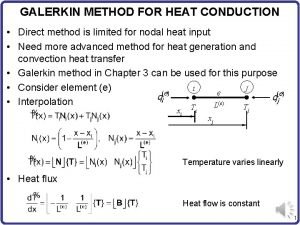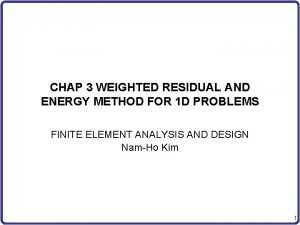Ultrasonic Scattering Analysis with the Discontinuous Galerkin Approach

- Slides: 1

Ultrasonic Scattering Analysis with the Discontinuous Galerkin Approach D. Rubinetti 1, D. A. Weiss 1, E. Weingartner 2, M. Lenner 3 1. Institute of Thermal and Fluid Engineering, Switzerland 2. Institute of Sensors and Electronics, Switzerland 3. Corporate Research Center, ABB Switzerland Ltd. INRODUCTION We prove and verify that the discontinuous Galerkin method is a well-suited approach to investigate acoustic scattering phenomena. For that purpose, we conceive a model for plane wave scattering from a rigid sphere. Figure 1. A rigid sphere hit by an acoustic wave radiates the scattered pressure in different directions as shown in the polar plot on the right. RESULTS The analytical results and the simulation results are in perfect agreement. COMPUTATIONAL METHODS • Convected Wave Equation, Time Explicit • Stationary background flow field omitted • 2 D-axisymmetric setup • Time-dependent Study 1: Plane wave only • Time-dependent Study 2: Sphere included • Scattered field: Result study 2 - result study 1 Figure 3. Simulation results (left) and comparison with analytical solution (right) for the radiation pattern on the sphere. Acoustic perturbation density Air density (1. 225 kg/m 3) CONCLUSIONS The rigid sphere test-case exemplarily shows the power of the discontinuous Galerkin method that was utilized for the investigation of scattering phenomena. Based on the findings of this study, future work targets the development of novel aerosol sizing technologies for industrial applications. Acoustic velocity field REFERENCES Background flow field 2. Acoustic pressure 1. John A. Adam. Rays, Waves and Scattering: Topics in Classical Mathematical Physics, Vol. 56, Princeton University Press (2017). Frank Ihlenburg. Finite element Analysis of acoustic scattering, Vol. 132, Springer Science and Business Media (2006). Excerpt from the Proceedings of the 2019 COMSOL Conference in Cambridge Background flow pressure

